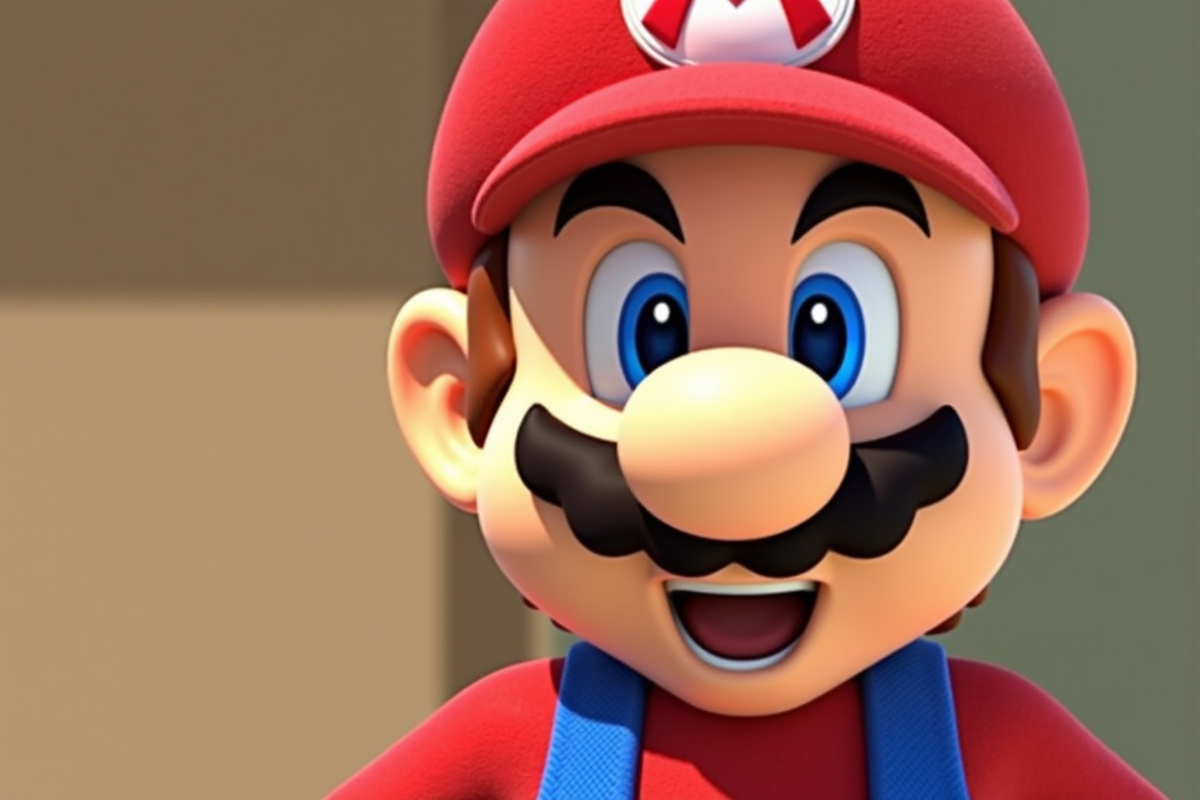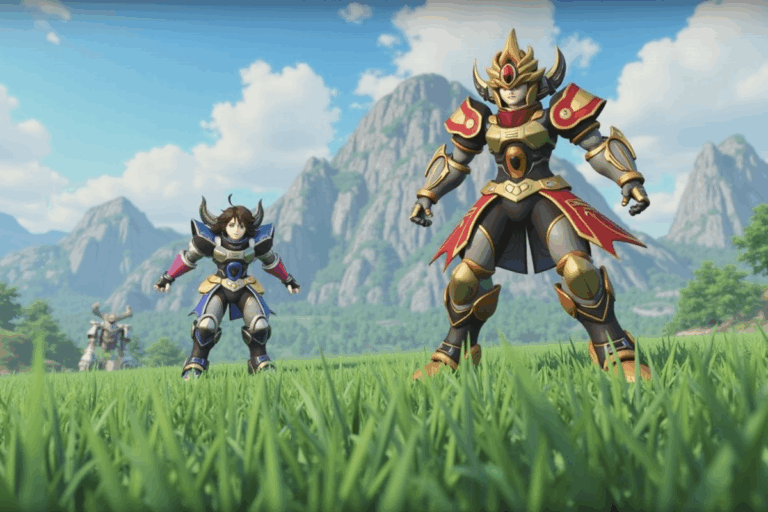Wii U 3D Mario – Animation Evolution and Next-Gen Expectations
Wii U 3D Mario – Animation Evolution and Next-Gen Expectations is a timely topic as anticipation grows for the next major 3D Mario release on Nintendo Switch 2. Since Super Mario Odyssey’s debut in 2017, fans have eagerly awaited news of a new mainline entry, with recent leaks and retailer listings pointing to an imminent announcement.
Nintendo’s hints and industry speculation have intensified discussion around what innovations the next generation of 3D Mario could bring, especially in animation style and technical execution.
The evolution of animation in 3D Mario games, from the Wii U era’s Super Mario 3D World to recent Switch titles, has set high standards for character movement and environmental fluidity. With Nintendo EPD Tokyo’s reputation for pushing creative boundaries, expectations are focused on how next-gen hardware will enhance animation pipelines, art direction, and player immersion.
As fans compare Wii U and Switch-era titles and look ahead to the potential of Switch 2, the conversation extends beyond gameplay to how animation will define the future of platformer design within the Mario franchise.
| Key Game | Platform | Animation Highlights |
|---|---|---|
| Super Mario 3D World | Wii U | Advanced lighting, multiplayer animation sync |
| Super Mario Odyssey | Nintendo Switch | Open-world animation, detailed character expressions |
| Upcoming 3D Mario (Switch 2, rumored) | Nintendo Switch 2 | Expected next-gen animation techniques and visual fidelity |
Wii U 3D Mario and the Evolution of Animation
Nintendo’s Wii U era marked a turning point for 3D Mario games, pushing animation quality and style to new heights. Titles like Super Mario 3D World showcased vibrant worlds, expressive character movements, and seamless transitions that set new standards for platformers. These games built on the foundation laid by earlier titles but elevated the visual storytelling through refined animation pipelines and art direction.
The animation advancements on the Wii U did more than just enhance aesthetics—they directly impacted gameplay. The responsiveness of Mario’s movements, from subtle facial expressions to fluid jumps, created a stronger connection between player input and on-screen action. This immersive approach influenced not only future Mario games but also inspired competing platformers across the industry.
As anticipation grows for Nintendo Switch 2’s rumored 3D Mario installment, fans expect even greater leaps in animation fidelity. The legacy of the Wii U era continues to shape player expectations, with many looking for innovations that blend technical mastery with the charm and creativity synonymous with the Mario franchise.
Super Mario 3D World – Animation Breakthroughs
Super Mario 3D World delivered a notable leap in animation design for Nintendo’s platformers. Animators used advanced rigging techniques to give every character—from Mario himself to enemies—distinct personalities through their movements. The Cat Suit power-up exemplified this, with nuanced animations like tail flicks and feline stretching that added humor and expressiveness.
Environmental animations also became more dynamic, with interactive elements like moving platforms, shifting shadows, and weather effects contributing to a lively world. Every detail was crafted to make each level feel unique without distracting from gameplay clarity. These breakthroughs helped cement Super Mario 3D World as an industry benchmark for cohesive character-environment interaction.
Technical Innovations in Wii U Era Mario Games
The Wii U era saw Nintendo EPD Tokyo implement new animation pipelines that streamlined asset creation while boosting visual fidelity. Real-time lighting effects enhanced depth perception and made characters pop against richly colored backdrops. Developers introduced more complex skeletal systems allowing for smoother transitions between actions—critical for responsive platforming. Another innovation was adaptive animation blending, which adjusted movement speed and style based on terrain or power-ups in real time.
This technology gave players an unprecedented sense of control over Mario’s actions, making gameplay feel both intuitive and visually rewarding. Such technical strides set high expectations for what fans hope to see when the next-generation Switch 2 debuts its anticipated 3D Mario adventure.
VFXB Fact Nugget
Super Mario 3D World on Wii U was the first mainline 3D Mario game to feature fully animated facial expressions for all playable characters during gameplay—not just cutscenes—setting a new bar for character animation detail in the series.
3D Mario’s Influence on Platformer Animation
Nintendo’s 3D Mario series has consistently set a high bar for animation in platformer games. From the Wii U era’s Super Mario 3D World to Super Mario Odyssey on the Switch, each installment has showcased technical leaps in character movement and environmental design. The series’ commitment to fluid animation ensures that every jump, spin, and dash feels responsive and visually delightful.
The transition from Wii U to Switch brought noticeable refinements in animation pipelines. Animators at Nintendo EPD Tokyo have leveraged improved hardware to create smoother transitions, richer facial expressions, and more dynamic environments. These innovations have become reference points for studios developing their own platformers, influencing everything from timing of movement cycles to environmental storytelling through animation.
With rumors swirling about a new 3D Mario for the upcoming Switch 2, fans are vocal about their expectations. They look forward to even more polished animations that enhance immersion and gameplay precision. As anticipation builds for the next installment, the franchise’s legacy continues to drive advancements across the industry.
Setting Industry Standards
Super Mario 3D World set new standards with its crisp animations and expressive character movements. Animation professionals often point to its seamless blend of cartoon physics and precise control as a blueprint for modern platformers. The game’s success demonstrated that detailed animation can coexist with tight gameplay mechanics without sacrificing performance.
Developers outside Nintendo study these techniques closely, adapting elements such as secondary motion and squash-and-stretch effects into their own projects. As a result, the entire genre benefits from Nintendo’s iterative improvements in animation quality.
Artistic Direction and Player Experience
The artistic direction of recent 3D Mario games prioritizes clarity, playfulness, and readability. Animators use vibrant colors, exaggerated poses, and carefully timed actions to guide players’ attention during complex platforming sequences. This approach ensures that visual feedback always matches player input, creating a satisfying sense of control. Players often cite the charm of Mario’s animations as central to their enjoyment.
Whether it’s a subtle tilt of his cap or a joyful leap after collecting a Power Moon, these details make interactions memorable. As fan expectations rise ahead of the next release on Switch 2, Nintendo faces the challenge of further elevating this signature blend of artistry and responsive gameplay.
Transition to Switch and Beyond
Nintendo’s evolution from Wii U to Switch marked a pivotal era for 3D Mario games, especially in animation and visual fidelity. Super Mario 3D World on Wii U introduced a refined animation style, blending smooth character movements with expressive reactions that enhanced both gameplay clarity and player immersion. This approach set the stage for further innovations as the franchise moved to the Switch.
The Nintendo Switch continued this legacy with Super Mario Odyssey, where advanced hardware enabled richer environments and more fluid animations. The leap in animation quality went beyond mere aesthetics—each movement conveyed Mario’s personality and responded intuitively to player input, setting new industry standards.
As anticipation builds for a next-gen 3D Mario on Switch 2, fans and experts alike expect even greater advancements in animation technology, potentially leveraging improved hardware for more dynamic worlds and responsive characters.
Comparing Wii U and Switch 3D Mario Animation
Super Mario 3D World on Wii U showcased meticulous attention to character motion, emphasizing precise jumps, spins, and transformations like the Cat Suit. Animators balanced cartoon charm with gameplay readability, ensuring that every action felt deliberate yet playful. Environmental effects—rippling water, shifting platforms—were crafted to complement these animations without overwhelming the player’s focus.
Transitioning to Switch with Super Mario Odyssey, Nintendo EPD Tokyo took full advantage of upgraded processing power. Animations became even more nuanced – subtle facial expressions, garment physics on Mario’s cap, and seamless transitions between actions all contributed to an immersive experience. The art direction leaned into global themes while maintaining consistent animation quality across diverse kingdoms.
These improvements not only elevated the franchise but also influenced broader platformer game design trends.
Anticipating Next-Gen 3D Mario Animation on Switch 2
Industry insiders widely expect Nintendo to push animation boundaries further with the upcoming 3D Mario title for Switch 2. Enhanced hardware promises higher frame rates and greater detail in both characters and environments. Fans hope for even more expressive animations—potentially integrating real-time physics or advanced AI-driven behaviors that make each interaction feel unique.
Animation professionals predict that Nintendo will refine its signature style while experimenting with new effects like dynamic lighting or procedurally generated movements. Player expectations center around smoother transitions, richer environments, and increased interactivity within levels. If past trends continue, the next-gen entry could redefine how animation supports platforming mechanics—not just within Mario games but across the entire genre.
Expert Insights and Community Expectations
Industry experts closely watch Nintendo’s approach to 3D Mario games, especially with the anticipated Switch 2 release. Animation professionals highlight how Super Mario 3D World on Wii U set new standards for character movement and environmental detail. The transition to Super Mario Odyssey further advanced animation pipelines, blending expressive character design with seamless world navigation.
Community expectations are higher than ever in 2025. Fans not only expect innovative gameplay but also demand cutting-edge animation and art direction. Social forums frequently debate how the next 3D Mario should build upon previous successes, particularly regarding animation quality and technical polish. The call for a fresh visual identity, while honoring the franchise’s legacy, is stronger than in past generations.
Analysts see the new 3D Mario as a potential system seller for Switch 2, citing historical trends where flagship Mario titles drive hardware adoption. There is a shared belief among insiders that Nintendo EPD Tokyo will once again redefine platformer animation standards, given their track record of blending creativity with technical mastery.
Common Questions
What was the main 3D Mario game for Wii U?
Super Mario 3D World was the flagship 3D Mario title for the Wii U, known for its cooperative multiplayer and vibrant 3D animation.
How did 3D animation evolve in Mario games on Wii U?
Super Mario 3D World introduced more advanced lighting, smoother character models, and dynamic camera work compared to previous entries.
Is a new 3D Mario game coming to Switch 2?
Industry reports and Nintendo statements strongly suggest a new 3D Mario game is in development for Switch 2, with an announcement expected soon.
What makes 3D Mario games unique in terms of animation?
3D Mario games are celebrated for their expressive character animations, imaginative environments, and seamless integration of gameplay and visual storytelling.
How do Wii U 3D Mario games compare to Switch titles?
Wii U’s Super Mario 3D World set a high standard for animation and level design, but Switch’s Super Mario Odyssey pushed the series further with open-world elements and more detailed animation.
The animation journey of 3D Mario, from the Wii U era to today’s next-gen rumors, shows Nintendo’s relentless drive to set—and reset—the standard for platformer visuals. With each leap in technology, Mario’s world becomes more expressive and immersive, making every jump and spin feel fresh even decades after his debut.
If you’re eager to follow the latest on 3D Mario’s animation evolution and what the next generation could bring, there’s plenty more to explore on our website. Dive deeper into behind-the-scenes insights, technical analyses, and community expectations to stay ahead of every new development.


